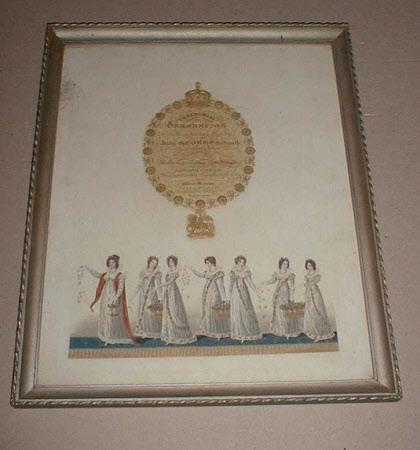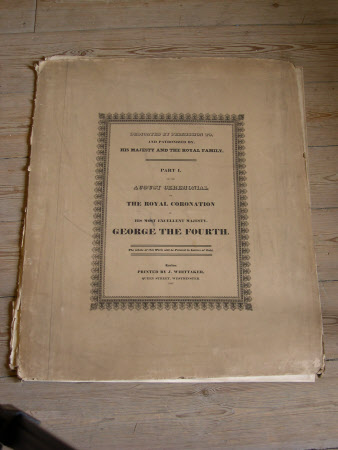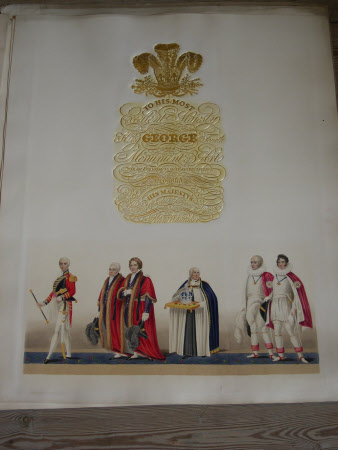Miss Fellowes (b.c.1771) the Herb-strewer and her ladies at the Coronation of King George IV
Francis Philip Stephanoff (1790-1860)
Category
Art / Prints
Date
1823
Materials
Glass, Paper, Pine
Measurements
750 x 600 mm
Order this imageCollection
Belton House, Lincolnshire
NT 433891.9
Summary
Engraving, Miss Anne Fellowes (b.c.1771) the Herb-strewer and her ladies at the Coronation of King George IV by Francis Philip Stephanoff (1790-1860). One of a set of 12 framed prints on the Coronation of King George IV by Sir George Naylor.. Published 1823. Anonymous description at the coronation: 'Soon after 8 o’ clock Mr Fellowes led into the hall Miss Fellowes who afterwards preceeded the procession on the royal platform as His Majesty’s Herb Woman; she was attended by Miss Bond, Miss G. Collier, Miss Caldwell, Miss Hill, Miss Daniel and Miss Sarah Ann Walker (b.1804), in the character of assistant maids. Miss Fellowes was attired in a magnificent dress of white satin with a mantle of the finest scarlet cloth, trimmed with gold and lined with white satin, and she bore a splendid gold badge and chain. The head dress was of gold wheat intermixed with grapes and laurel leaves. This was appropriate and elegant in the highest degree. The attendant maids wore white crape dress over rich white satin, with an appropriate sash of flowers suspended from the shoulder to the bottom of the skirt and flowers tastefully arranged in the trimming, with Gabriel ruffs; the head dresses of these ladies consisted of chaplets of flowers to correspond with the general designs of their dress. Miss Fellowes carried a most beautiful basket, filled with the choicer and most rare flowers and the attendant young ladies bore, in pairs, three baskets of elegant construction, formed for two persons and filled with a similar profusions of Flora’s bounty. The flower baskets were brought into the Hall and placed opposite to the ladies, who were accommodated with chairs at the extremity of the Hall.'
Makers and roles
Francis Philip Stephanoff (1790-1860), engraver (printmaker)


